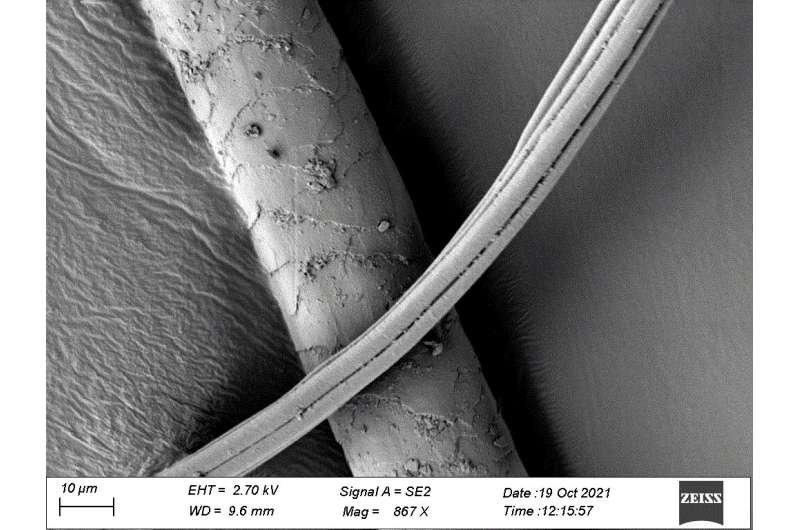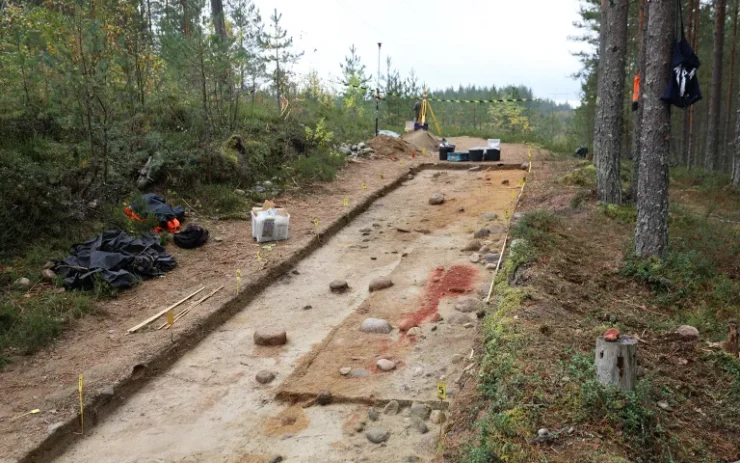Based on archaeological findings, it was possible to identify human remains as those of a child who may have been found in a Stone Age burial site uncovered beneath a gravel road in eastern Finland.
In the eastern Finland, Majoonsuo, an unusual excavation of a Stone Age burial site was completed. Microscopically tiny bits of canine and small mammalian hairs, plant fibers, and bird feathers were discovered during the excavation. Organic matter is not well maintained in the acidic soil of Finland. The goal of the study, which was directed by archaeologist Tuija Kirkinen, was to find out whether soil analysis might be used to identify these severely deteriorated plant and animal based elements.
The dead were typically buried in dirt pits in Finland during the Stone Age. Tombs in Finland have little organic material from human made artifacts left, but it is known from burial sites nearby that objects made of bones, teeth, and horns as well as fur and feathers were buried with them.
In 2018, the site was studied by the Finnish Heritage Agency’s Archaeological Field Services team since it was thought to be in danger of being destroyed. The grave’s top was partially visible, and it was buried beneath a sand and gravel road in a woodland. The site was initially identified by its red ochre’s vivid color. Red ochre, or clay soil rich in iron, has been employed in rock art and burials all throughout the world.
In the archaeological dig at the burial site, only a few teeth were found of the deceased, on the basis of which they are known to have been a child between 3 and 10 years of age. The burial also contained two probable quartz artifacts and two transverse arrowheads made of quartz. The grave can be dated to the Mesolithic period of the Stone Age, or around 7,500 years before the Common Era, based on the shape of the arrowheads and shore level dating.
To the 65 soil sample bags that were gathered and weighed between 0.6 and 3.4 kilograms, comparison samples were also taken from the outside of the grave. In the Helsinki University archaeological lab, the soil was examined after the organic debris was removed with water. In this technique, transmitted-light and electron microscopy were used to identify the exposed fibers and hairs.
A total of 24 tiny (0.2-1.4 mm) bits of bird feathers were found in the soil samples. Seven barbules were identified as the down of a waterfowl (Anseriformes). The oldest feather fragments ever discovered in Finland are these. Although the origin of the down is impossible to state with certainty, it may come from clothing made of waterfowl skins, such as a parka or an anorak.



In addition to the waterfowl down, one falcon (Falconidae) feather fragment was identified. It might have initially come from feathers used to embellish the clothing or from the fletching of the arrows attached to the arrowheads.
In addition to the feathers, 24 pieces of mammalian hair with lengths ranging from 0.5 to 9.5 mm were found. Since the majority of the hairs were severely damaged, identification was impossible. The three dog hairs discovered at the bottom of the grave were the best find. The hairs could also come from, say, shoes made of wolf or dog skin. A dog might have been lying at the child’s feet as well.
“Dogs interred with the deceased have been found in, for example, Skateholm, a famous burial site in southern Sweden dating back some 7,000 years.” said Prof. Kristiina Mannermaa
“The discovery in Majoonsuo is sensational, even though there is nothing but hairs left of the animal or animals, not even teeth. We don’t even know whether it’s a dog or a wolf.” she said and adding: “The method used demonstrates that traces of fur and feathers can be found even in graves several thousands of years old, including in Finland.”
A few of the hairs could be distinguished as belonging to tiny mammals. It’s entirely feasible that they are of a secondary nature, which would mean that they weren’t buried on purpose. However, it’s plausible that people in prehistoric times used mole skins for clothing. For instance, European mole fur has historically been a sought after item.
Three plant fiber remnants were also discovered, which are particularly poorly maintained in the acidic Finnish soil. The fibers were bast fibers, which are those derived from plants like nettles or willows. The item they were a part of at the time might have been a fishing net, a cord for fastening clothing, or a collection of strings. For the time being, only one other bast fibre discovery dating back to the Mesolithic Stone Age is known in Finland: the famed Antrea Net on display in the National Museum of Finland, laced with willow bast fibres.
In the study, a fibre separation technique was created, and it has shown how valuable archaeological site soil is as a source of knowledge.
